Mammoth task: the Russian family on a resurrection quest to tackle the climate crisis
Can bringing mammoths back to Siberia save permafrost from thawing?
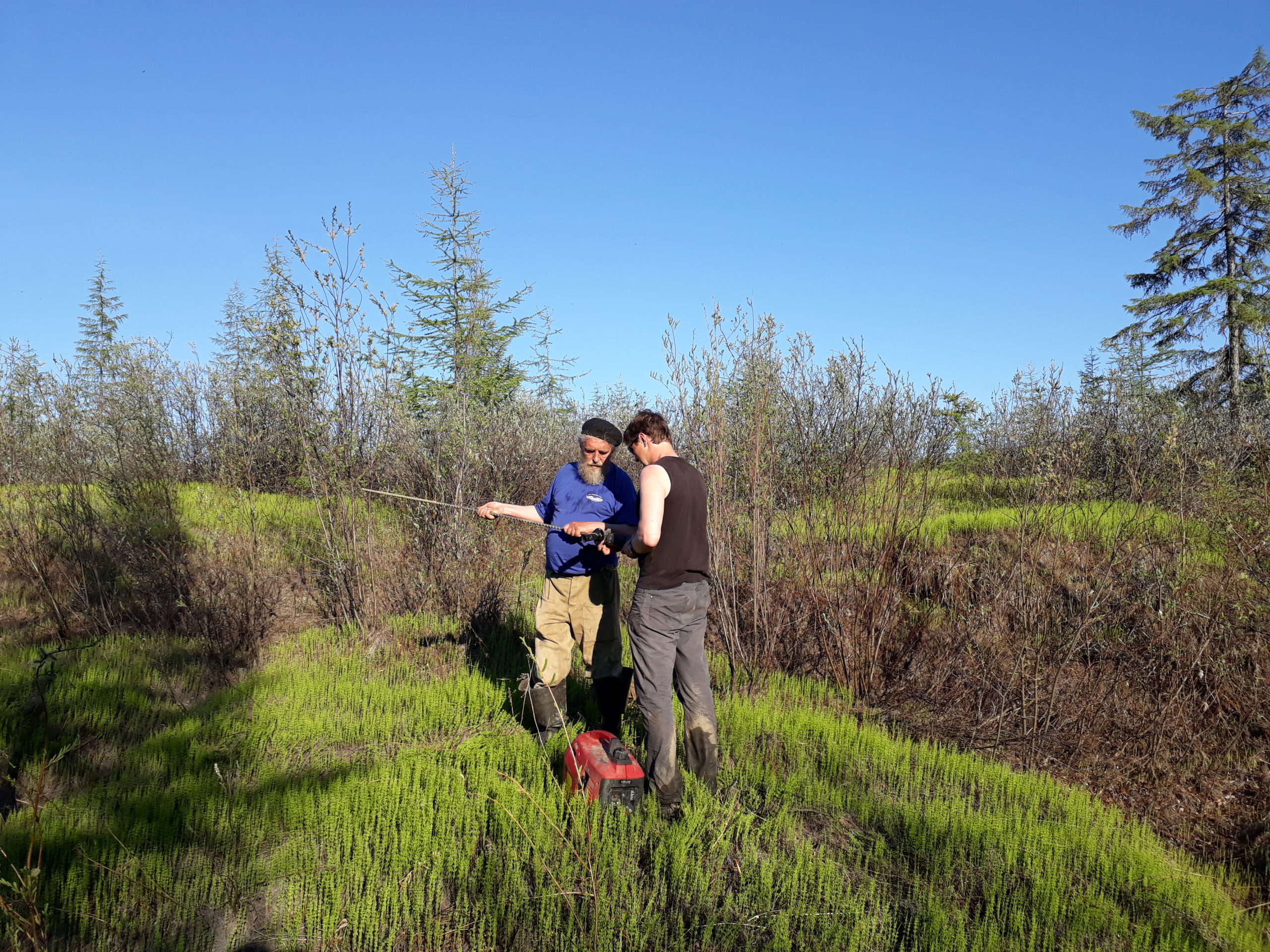
On the banks of the River Kolyma, deep into the Arctic circle in north-east Siberia, lies a gently rusting Soviet-era tank. It doesn’t look out of place here. After all, just down the river is the hull of a half-sunken ship and the remains of an Aeroflot aeroplane fuselage that met an unfortunate end.
The tank isn’t working at the moment – it’s hard to find parts – but until recently, it was driven by a bearded Russian wearing a beret, a cigarette clamped permanently between his jaws, taking a sort of macabre delight in destroying trees and churning up soil.
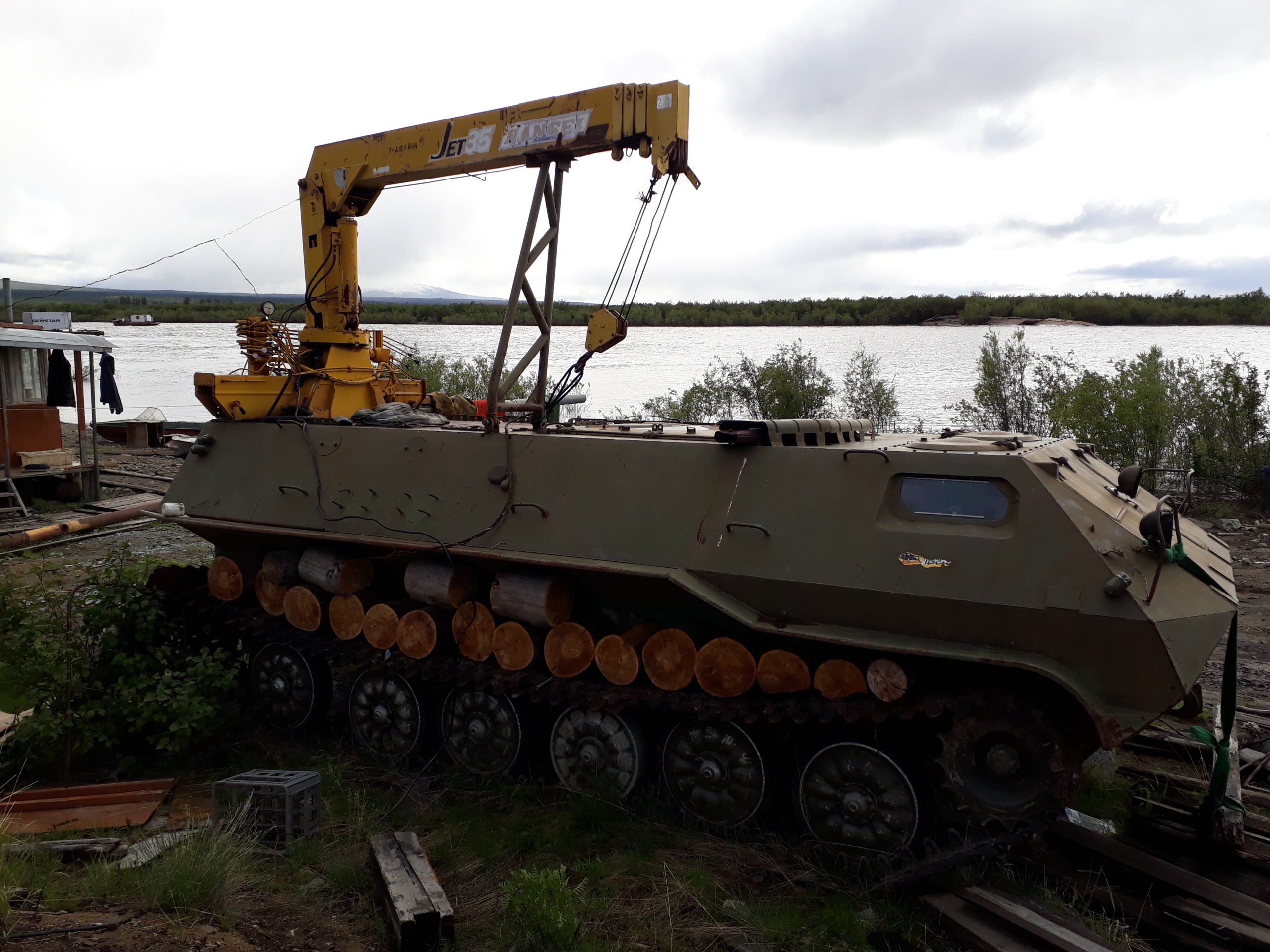
This is Sergey Zimov who, together with his son Nikita, is carrying out an experiment on this scrubby patch of Arctic tundra: they want to restore the prehistoric “mammoth steppe” ecosystem and see if it proves their hypothesis that a grassland grazed by large herbivores has an effect on slowing down – or even reversing – the thawing permafrost.
Currently the landscape is mostly larch forest with very low biodiversity. There are no animals, save for the odd moose and millions of mosquitoes. Meanwhile, Arctic temperatures are increasing twice as quickly as those in the rest of the planet, and the permafrost that covers 65 percent of Russia is thawing. Fast. Many of the buildings in the town of Chersky – where the Zimov experiment is based – sport deep cracks (some have collapsed altogether), roads are buckled and the ground is humped and hollowed.
The clue to what counts as permafrost is in the name – permanently frozen ground. As with anything frozen, it is liable to thaw if temperatures get too hot. That is precisely what is happening all across the Arctic.
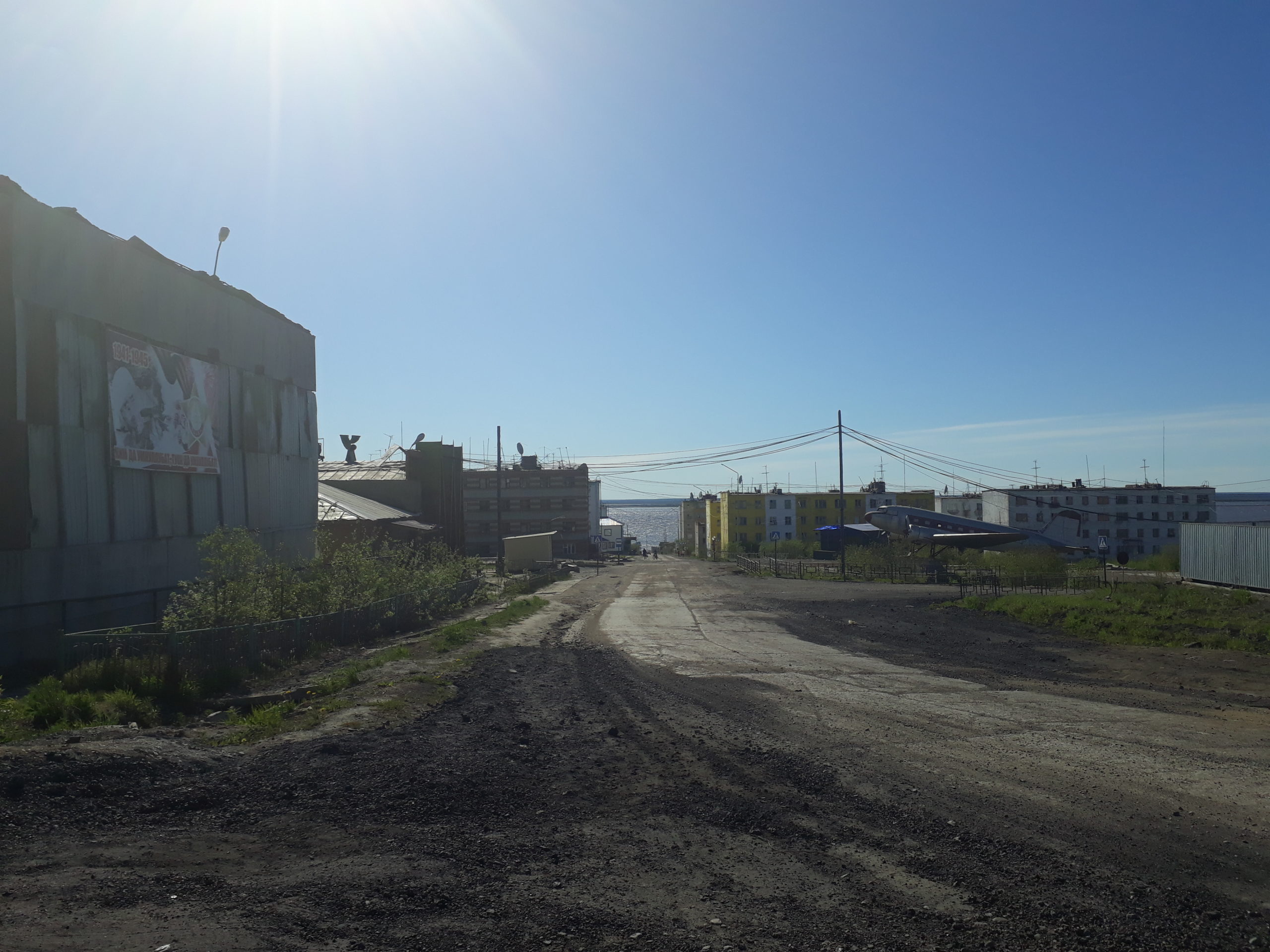
Permafrost is difficult to define. It covers almost a quarter of the Northern Hemisphere and sequesters double the carbon found in the atmosphere today. When frozen, the microbes that feed on the organic material found in permafrost are “asleep.” When it thaws, they wake up and the anaerobic respiration produced releases greenhouse gases.
Officially, it’s soil that has been frozen for two years or more, with an “active layer” that thaws seasonally. But thanks to global warming, permafrost has been thawing with increasing magnitude, with all sorts of disruptive effects. A process called a “thermokarst megaslump” has opened up huge holes across the tundra and the bodies of mammoths are being found with greater frequency, their flesh decomposing in the Arctic sun. Strange things are awakening. A couple of years ago, a team of Russian scientists reportedly found 30,000-year-old worms in the permafrost which, upon being warmed up gently in a Moscow laboratory, began to wriggle around.
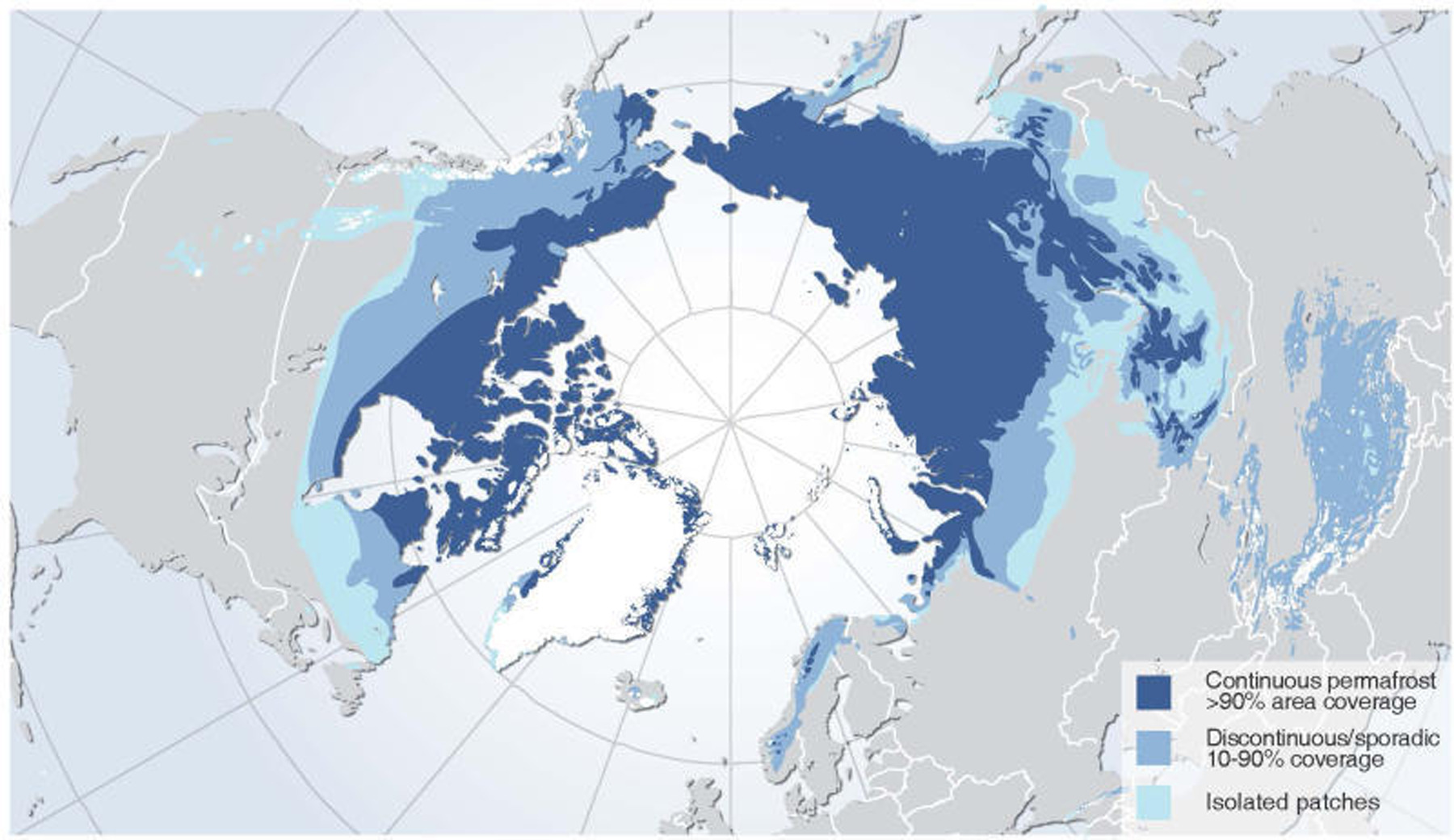
Almost ironically, the mammoths exposed by the thawing of permafrost are what sparked Sergey Zimov’s hypothesis: that large herbivores are necessary to maintain the integrity of permafrost. The Zimovs use their tank to mimic the tread and destructiveness of the woolly mammoth in a 144km² fenced off area they call “Pleistocene Park.”
Recreating the mammoth’s former ecosystem might seem like an impossible task given the creature has been extinct for 4,000 years, but for the Zimovs this is a minor detail. They are concerned with ecological processes – the web of connection that produces a functioning ecosystem. The tank will do just fine as a mammoth-stand in, destroying trees and stimulating grass growth in its wake.
There are animals in the park that play a similar role. Yakutian horses and reindeer have been purchased from local indigenous herders, and other creatures that haven’t lived in the region for a long time (yak, sheep, Kalmykian cow, musk ox, bison) have come from much further afield. There are around 120 animals in total, although deaths and births happen with regularity. Last summer, Nikita Zimov undertook a perilous journey by truck to transport 12 baby bison all the way from Denmark. The roads are dreadful for most of Northern Siberia, and then they disappear completely. Travelling by barge along the Kolyma is the only way in.
A few seasons before that, an expedition to Wrangel Island in the Arctic Ocean to find musk oxen almost ended in disaster after their boat hit a storm. The discovery on return that all the oxen were males was a particularly frustrating one. The animals in the park roam where they please, encouraged to breed and forage so their behaviours have an effect on the permafrost: trampling compacts ground and keeps it frozen, while grassland reflects solar radiation.
Even though the tank remains out of commission, the Zimovs are hoping that soon they won’t need it at all. They’re hoping that one day a mammoth will return to the Arctic.
Resurrecting the dead
Sometime in the early 2000s, rumblings began in the scientific community of a new form of conservation that would potentially fix a growing problem. What if, instead of fighting what seemed to be an increasingly losing battle against extinction, you could potentially resurrect an extinct creature through cloning methods?
Still reeling from the implications of Dolly the sheep in 1997, in 2003 a team of scientists in Zaragoza, Spain, managed to successfully produce a clone of the extinct Pyrenean ibex, having previously collected genetic material from the last remaining individual of the species. Although the cloned calf only lived for ten minutes, the genie was out of the bottle: extinction didn’t have to be forever.
[Read more: Produce mammoth stem cells, says creator of Dolly the sheep]
Advances in genetic technology saw the arrival of CRISPR, a type of gene editing software that allowed for swift and cheap splicing of genomes. Now it didn’t matter if you didn’t have a viable cell for cloning – you could simply create a complete genome in a laboratory. This is what happened with the mammoth, whose genome was sequenced in 2015, becoming the first extinct creature to be catalogued.
While preserved mammoth bodies are common finds in Siberia, their flesh prevented from decomposition by permafrost, living cells begin to degrade at the point of death so a certain amount of cell degradation is inevitable. But by using CRISPR, a scientist is able to plug, say, the genome of an Asian elephant with the genes that make the physical traits of a mammoth (cold adapted blood, thick hair, small ears). Theoretically, if that genome was implanted into an egg and then fertilised, the Asian elephant in question would give birth to a mammoth, albeit one that is genetically a hybrid.
De-extincting the mammoth in the future is a possibility, but the follow up question must surely be: what does one do with such a creature? Enter the Pleistocene Park. The vast expanse of tundra and cold temperatures, not to mention the ready-made connotations with a similar de-extinction “project”, Jurassic Park, mean it is the obvious place for any newly “resurrected” (hybridised, to be exact) mammoth to go.
All this talk of restoration, rebirth and resurrection raises further questions: one of them being the ethical implications of “playing God”. But the other, larger question regards the role of humanity on the planet. We are now unofficially living in the Anthropocene – a new epoch that designates humans as top geological agents, leaving our mark in the rock and influencing just about every planetary process. Most of our actions are not positive ones, evidenced by the tide of environmental destruction, global warming and explosive levels of extinction left in our wake.
Would resurrecting the mammoth be a way for humans to right past wrongs, or would it be an extension of the power and control we wield over a ravaged planet?
‘We are as gods’
I visited the Pleistocene Park in the summer of 2018 to attempt to answer this question. The mammoth is a bit of a thorny conversation topic to the Zimovs. Yes, Sergey Zimov strides around the tundra wearing a t-shirt sporting a stylised cartoon of the massive hairy elephant, but his son is quick to shoot me down when I ask about their level of involvement in de-extinction.
“You have a lot of people believing in God,” he says. “And they don’t like this mammoth return. So I try and use it to bring attention to the park, but I don’t want any of the criticism!” But the relationship between de-extinction scientists and the park is difficult to ignore. A few weeks after I leave the park, the Zimovs are visited by the geneticist George Church, probably the biggest proponent of mammoth de-extinction, and Stewart Brand, lifelong environmentalist and now supporter of what is termed a “good Anthropocene” (the idea that humans should use their power to benevolently steward the planet). “We are as gods,” Brand famously quipped: “And we have to get good at it.”
I’m sceptical of this viewpoint. The Anthropocene concept is a flattening one: it categorises all humans as the same, separated from nature, wreaking havoc on a lifeless Earth. It distributes blame equally, rather than directed towards the worst polluters. It ignores the uneven and ongoing effects of climate change on different parts of the globe. Planetary stewardship – no matter how benevolent – reinforces this idea. It suggests things can, and should, be controlled.
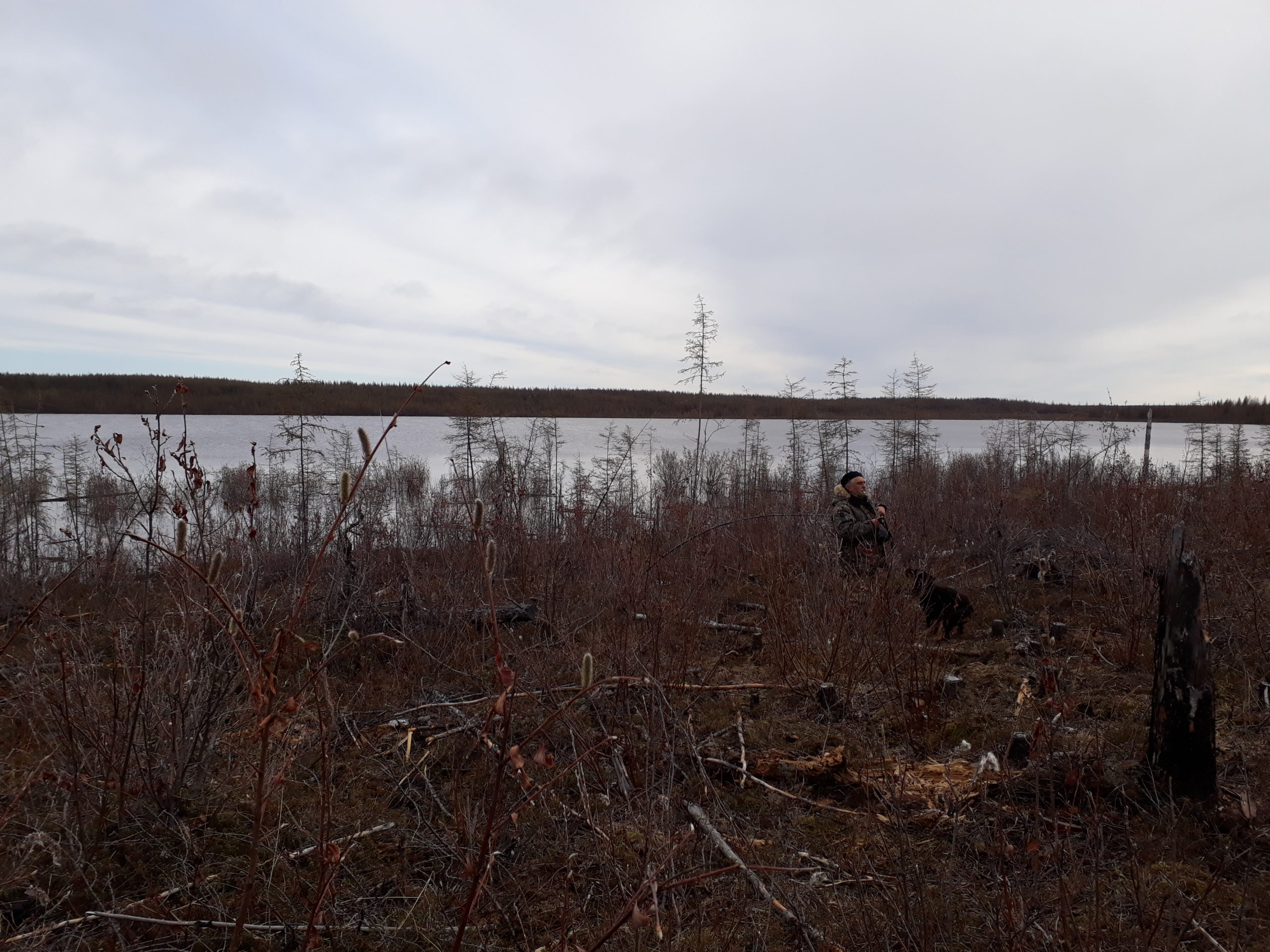
But I don’t see much evidence of this control during my time at the park. The first day I’m taken there (it’s a 30 minute boat ride away from the science station that houses visitors) Nikita Zimov is informed by his rangers that the herd of musk oxen hasn’t been seen for days so he heads into the undergrowth to find the animals. I’m left alone, surrounded by flooded plains, no animals to be seen save for a blind yak.
A few days later, the permafrost tunnel floods. A sort of underground laboratory dug to house permafrost cores, scientific equipment and frozen fish, it was supposedly placed at a high enough level that the annual floodwaters of the Kolyma would never reach the entrance – until they did. We spend a day pumping the water out and dislodging the items that had stuck fast to the frozen ceiling. A little way down the river, the expensive scientific equipment owned by a well-funded contingent of German permafrost scientists is submerged under water.
Meanwhile, the Zimovs are furious about the 12 baby bison they have purchased from an Alaskan herder, still stuck in their pen. They’re unable to find a pilot willing to fly them over in the creaky, old DC-4 plane they have found. Everything that seemingly can go wrong, does go wrong. The Pleistocene Park is showing encouraging signs of becoming a grassland ecosystem, and initial tests show the permafrost is thawing less within the park’s boundaries.
But on the summer solstice (a swelteringly hot June day in the Arctic) we take a drill and some thaw depth probes to do some readings outside of the park, and the prognosis for the permafrost is not good. “We are fighting global warming,” Nikita Zimov says. “But global warming is fighting back.”
Tusk hunts
When permafrost makes the news, it’s never good. In early June, a fuel tank at the Norilsk power plant in Siberia collapsed because of thawing permafrost and 17,500 tonnes of diesel spilled into the river. A lot of people live and work on top of permafrost in Russia, and at the time of the Soviet Union, thousands of people were lured to the Arctic on the promise of highly paid jobs and cheap houses as part of a plan to “master the North”. Now the Soviet Union is long gone, along with all the perks, and thawing permafrost is making Arctic life very difficult.
A sort of black-market industry has emerged, with groups of men heading out onto the tundra for months at a time to look for mammoth bodies that thawing permafrost has exposed. They’re after the tusks that can be sold for a hefty profit to China, by far the world’s top market for ivory goods. These tusk hunts are often dangerous, with the men using illegal high-powered water cannons to blast holes and tunnels in permafrost, hundreds of miles away from towns or hospitals. Those who find a tusk have struck white gold, but those that don’t (most of them) will lose money.
There’s another tension too. To many Siberian Indigenous groups, the mammoth is a sacred beast and mustn’t be disturbed – to do so could mean death. Tusk hunters face an often-agonising decision: to betray their belief system or to feed their family.
I became aware of an uneasy relationship between tusk hunters and scientists when I visited the Mammoth Museum in Yakutsk, where I spent the winter in 2018. Yakutsk is the world’s coldest and largest city built on permafrost, and it has no roads in or out – in the summer you take the plane, in the winter the frozen rivers become ice roads and a thriving trucking network ferries supplies to and from the Arctic towns.
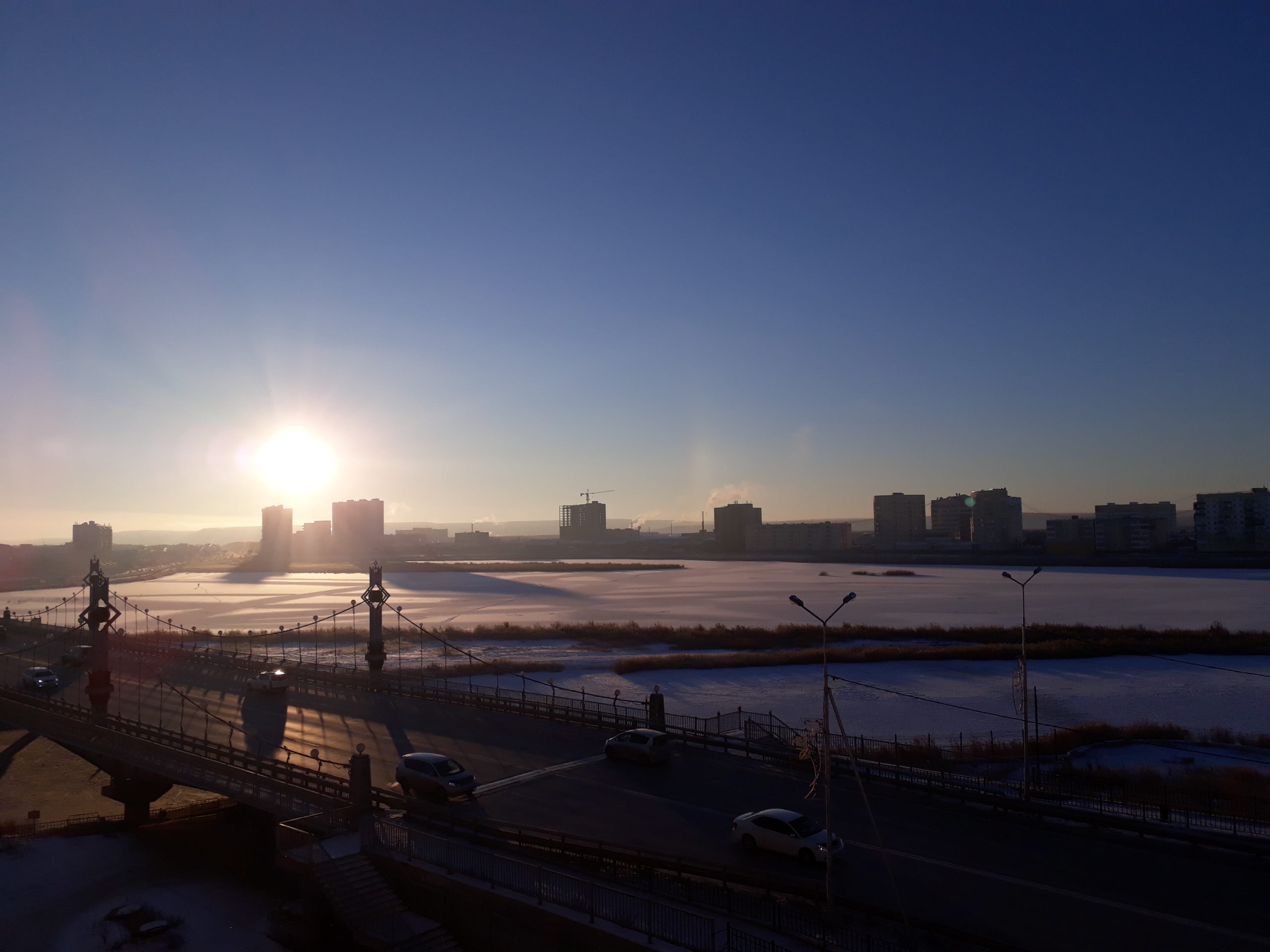
The Mammoth Museum and the Melnikov Permafrost Institute are institutions dedicated to understanding permafrost and tundra flora and fauna. This includes the mammoth. Since the collapse of the Soviet Union, the funding for these institutions has dried up. The scientists at the permafrost institute can only wait for international researchers with big grants to show up.
The museum has struck up an awkward partnership with a biotechnology company in Seoul, South Korea. Sooam Biotech is known for cloning pets (most famously, Barbara Streisand’s dog) and has made no secret of its desire to clone a mammoth. The Mammoth Museum is informed of any mammoth finds by tusk hunters and Sooam Biotech is offered first dibs on collecting genetic material from the body. In exchange, Sooam Biotech has financed a state-of-the-art laboratory and equipment for the museum.
Meanwhile, the Yakutian government has recently passed a law that protects permafrost, enshrining the rights of Yakuts to live on top of solid ground. This law is mostly symbolic. Permafrost thaw is a result of global warming, yet it is Arctic Siberia that bears the brunt.
These smaller, messier permafrost interactions say something important. The Pleistocene Park and the designs of scientists wanting to resurrect the mammoth work very much within a global narrative. The promotional material for the park involve references to “the world’s best plan” and “saving the world”. Similarly to the way the Anthropocene concept flattens humanity, constructing the Earth on a purely global scale produces a potential future catastrophe that hasn’t happened yet. Think about any Hollywood disaster movie – we must do something to prevent it.
Curating apocalypse in this way means the more local catastrophic events become seen as harbingers of a threat to come, rather than catastrophes in their own right. Permafrost makes the news as a “ticking time bomb”, something that will blow up unless we do something about it. Yet the people who live in the Arctic, particularly Indigenous groups and fragile communities like Chersky, are already dealing with an apocalypse and have been for some time.
The unpredictability of permafrost – now very much impermanent – challenges those proponents of a good Anthropocene who believe we can control the planet.
Putting life on ice
Freezing, being frozen, staying frozen – they all suggest a period of stasis, of suspension. Permafrost itself indicates permanence, but that can no longer be said to be true. What to do, when the planet is warming and the Arctic is warming even faster? Build freezers, that’s what.
Cryobanks have emerged in the past decade, often attached to museums, as a response to the rapid rise in species extinction. They offer a way to put “life on ice”, stored safely away until something can be done, be that captive breeding or de-extinction. Many of these projects have eschatological overtones – the Lazarus Project, The Frozen Ark – and suggest that control can somehow be regained by turning the temperature down.
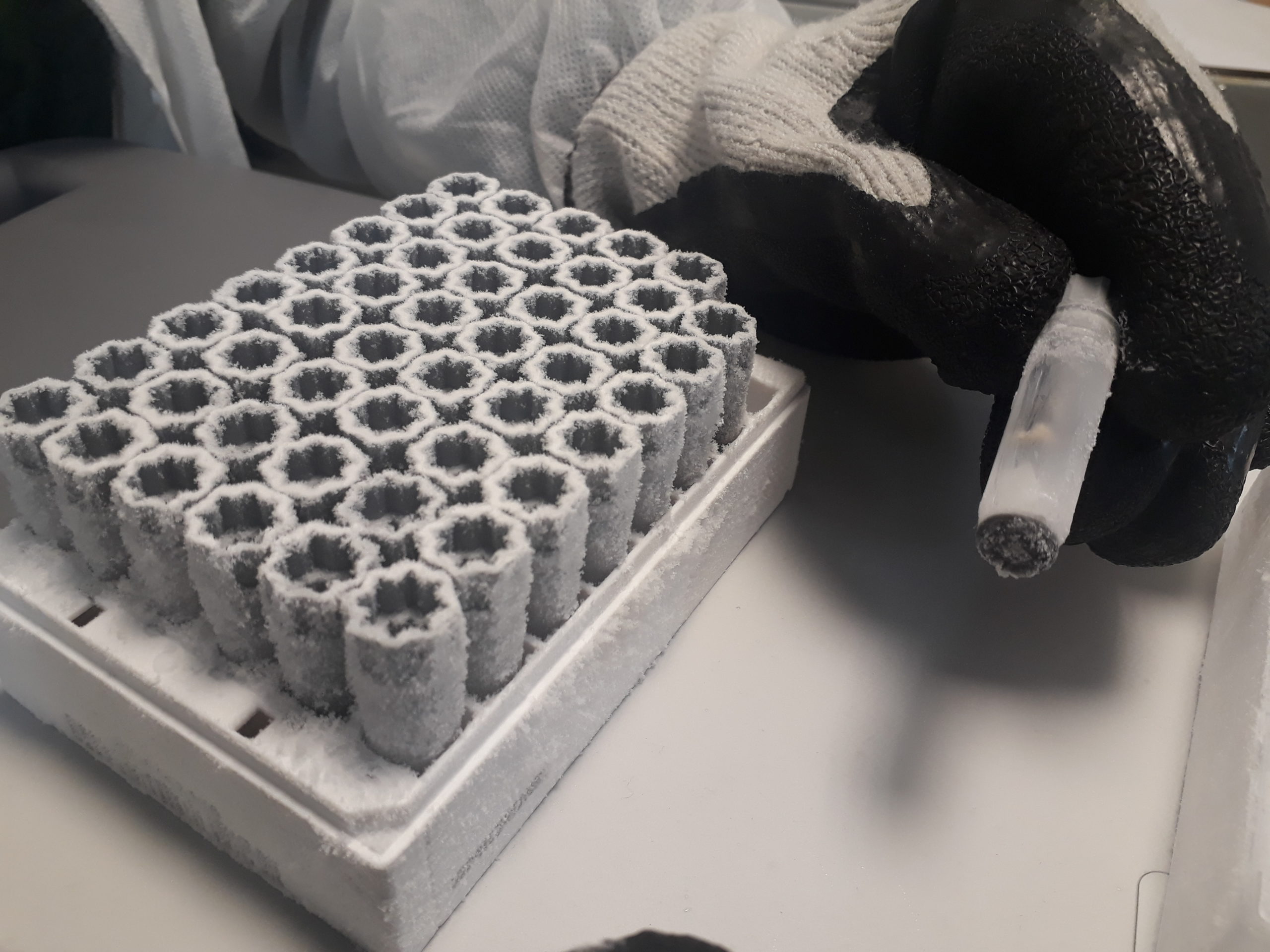
The 42,000-year-old horse lying in Yakutsk’s Mammoth Museum is dead. I can smell it. Its body had been found a few months earlier in a permafrost bank, and had been frozen in the museum’s freezer ever since. The horse has been so well preserved, it looks like it’s merely sleeping. A delegation from the pet cloning company Sooam Biotech is visiting Yakutsk to take samples, and I’ve been invited along to view the autopsy.
The head of the delegation, and CEO of the company, is Hwang Woo-Suk – a once disgraced South Korean veterinary scientist who made headlines in 2005 when he claimed he had cloned human cells. He hadn’t, and went from the pride of South Korea to a laughing stock overnight while claiming he had been deceived by a former colleague in the process. A few years later he began showing up in Yakutsk looking for mammoths and other prehistoric creatures. His pet cloning company makes him rich, but cloning a mammoth would bring global fame again.
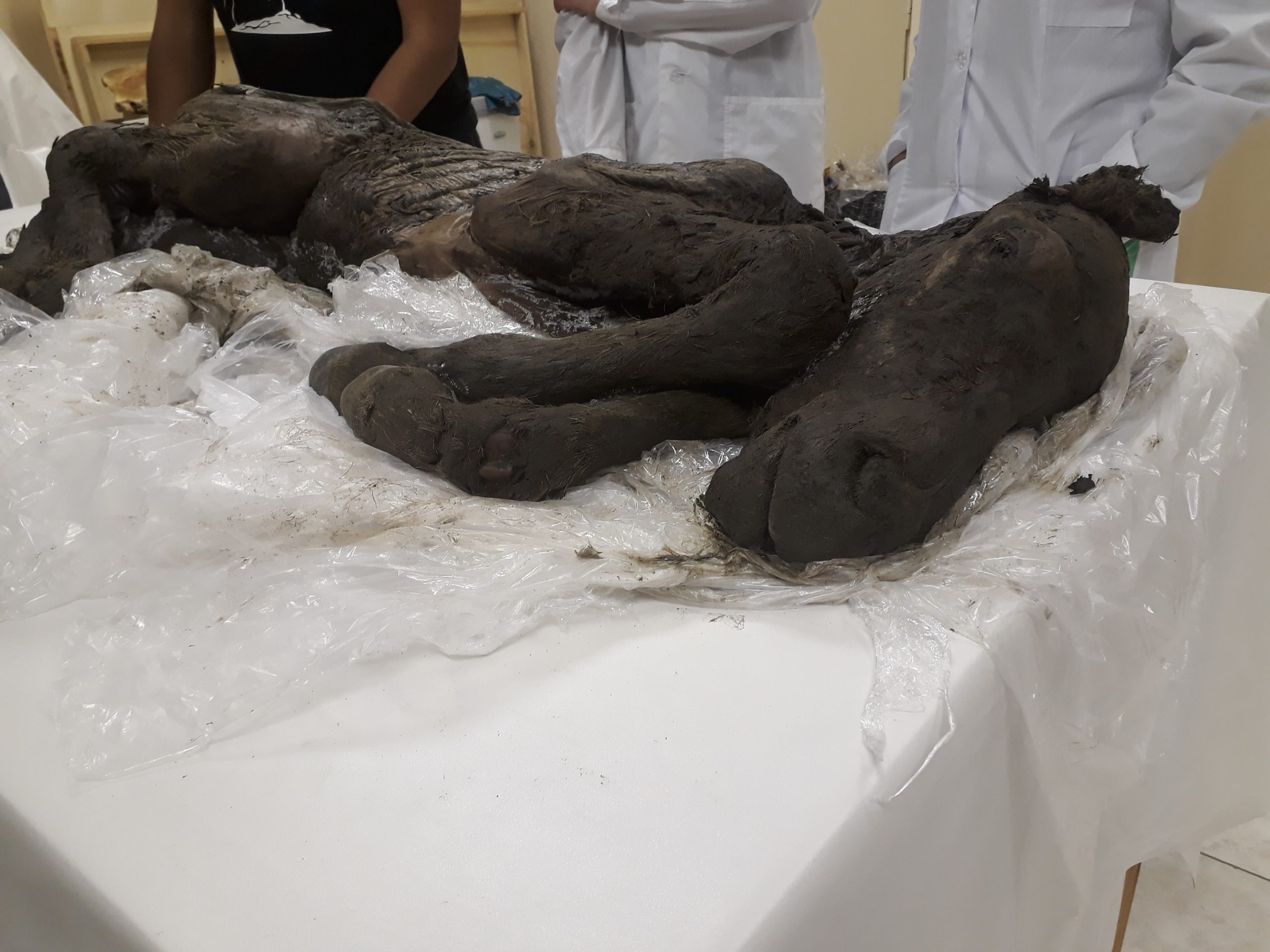
The Anthropocene may be the time of the human, but really it is the time of certain humans, or certain actions. Actions have consequences. The warming of the Arctic and the thawing of permafrost is but one of these consequences. The reaction to this, to attempt to regain control of planetary processes, whether this be through resurrecting the mammoth or restoring its habitat, is indicative of a commitment to a good Anthropocene that aims to continue human dominance on the Earth.
Having lived on top of permafrost, felt my feet sink into the mushy ground and rolled a ball of it between my fingers like putty, I remain doubtful any of this will work. What impact the Pleistocene Park may have on the permafrost around it is negated thousands of miles away by yet another thermokarst megaslump or another Arctic wildfire. While Nikita Zimov is philosophical about this, saying “it’s better to walk rather than to sit and wait for death,” it’s difficult to imagine the park ever reaching a point where it can mitigate permafrost thaw across the world. The mammoth, should it ever be resurrected, would surely exist as a curio rather than a thriving species, a monument to the hubris of playing God.
Those advocating a good Anthropocene mean well, but a much deeper state change is needed. The continuous layer of permafrost in Arctic Siberia is showing signs of becoming discontinuous through thaw. Discontinuity, I think, must also be our path. We need to halt and refuse the destructive practices that have underpinned the last century and beyond if there’s to be any hope of doing better in the future.
Discontinuity isn’t just a state of being, it is also a state of mind. The warming of the Arctic and the thawing of permafrost are huge concerns, yes, but attempts to force control of an increasingly out of control situation might well produce terrible gods rather than benevolent ones. Resurrecting mammoths – playing god – speaks to a doubling down of the mastery implied by the Anthropocene moniker.
Discontinuity, conversely, allows for the creativity in thinking of futures that relinquish destructive human dominance. The Pleistocene Park may be one of these futures, or it may not be. The point is, by becoming discontinuous, we become attuned to a radical openness that allows for thinking differently – ethically, collectively, progressively – about our role as humans on a discontinuous Earth.
Charlotte Wrigley is a PhD Candidate at Queen Mary University of London.
This article is republished from The Conversation under a Creative Commons license. Read the original article.